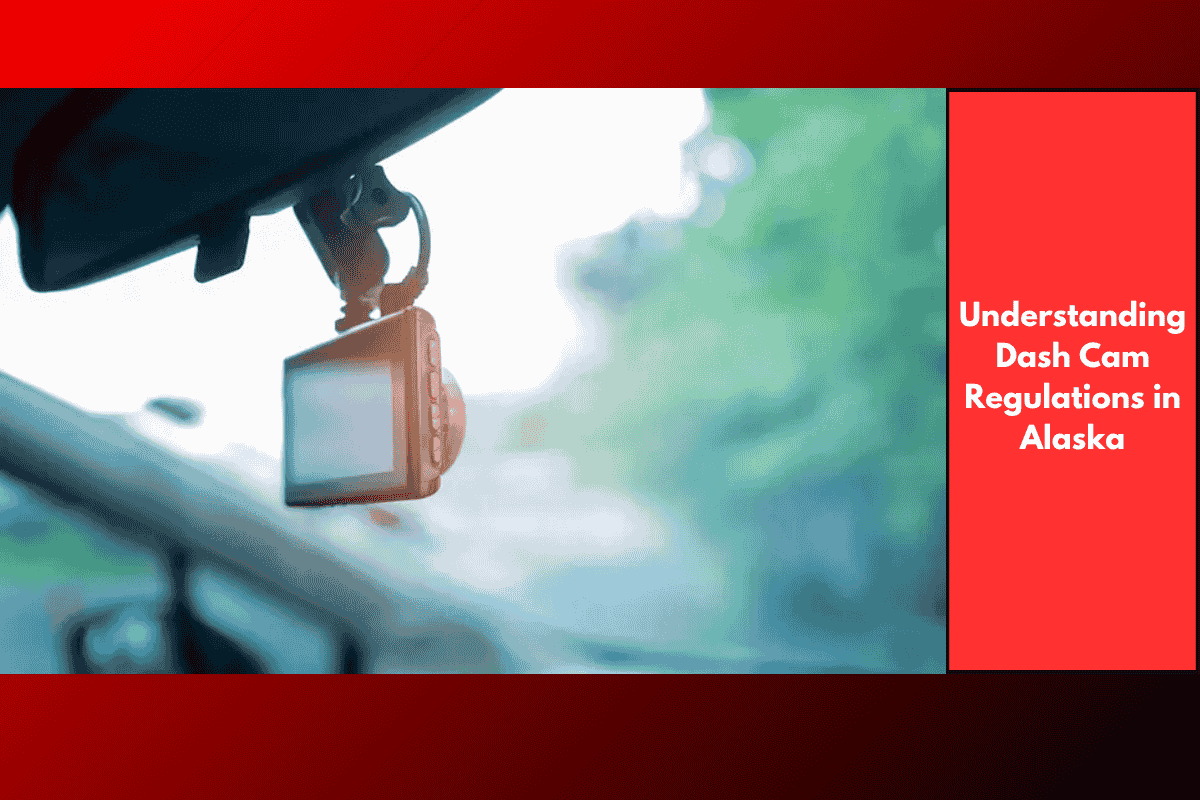Dash cameras (dash cams) are becoming an essential tool for drivers across the United States, and Alaska is no exception. These devices, which are mounted on the windshield or dashboard of vehicles, record video footage while driving. Dash cams can be useful in documenting accidents, providing evidence in case of disputes, or simply recording scenic drives, especially in a state like Alaska, known for its vast and varied landscapes. However, before installing and using a dash cam in Alaska, it’s important to understand the legal regulations that apply.
Are Dash Cams Legal in Alaska?
Yes, dash cams are legal to use in Alaska. There are no specific laws in Alaska that prohibit the installation or use of a dash cam in your vehicle. In fact, using a dash cam can be helpful for both drivers and law enforcement, as it provides a video record of road incidents. However, like any state, there are general guidelines and restrictions to keep in mind to ensure you’re using your dash cam within the bounds of the law.
Alaska’s Law on Recording Conversations
While dash cams are legal, the way they record may raise some concerns regarding privacy, especially if the camera is equipped with audio recording features. Alaska is a “one-party consent” state, which means that in general, as long as one person in the conversation (in this case, the driver) consents to the recording, it is legal. This means if you’re recording audio inside your vehicle with your dash cam, you do not need to inform passengers or other drivers that they are being recorded.
However, if the dash cam picks up conversations between other individuals who have an expectation of privacy, you may want to reconsider using the audio function to avoid potential legal issues. It’s important to understand the boundaries of personal privacy, especially if your dash cam records audio without your awareness.
Placement of the Dash Cam
When installing a dash cam in your vehicle, make sure it’s placed in accordance with Alaska’s vehicle code, which is similar to other states. The camera should not obstruct your view of the road or interfere with any of the vehicle’s safety features. The Alaska Department of Motor Vehicles (DMV) requires that nothing should block the driver’s view through the windshield, especially the area in front of the driver. This includes any devices, decals, or accessories.
Most drivers place their dash cams on the windshield behind the rearview mirror, which typically does not obstruct the view, but it’s important to be aware of how you position the device to avoid fines or penalties.
Using Dash Cam Footage as Evidence
One of the main advantages of having a dash cam is the ability to use the footage as evidence in the event of an accident or traffic dispute. In Alaska, video footage from a dash cam can be used in court, provided it is relevant and admissible. Video evidence can help verify the details of an accident or prove who was at fault in a traffic violation case.
However, keep in mind that dash cam footage, like any other evidence, must meet certain standards for admissibility in court. For example, the footage must not be tampered with and should be preserved in its original format. It is always a good idea to make sure your dash cam records in a format that can easily be presented in a legal context if necessary.
Dash Cams and Traffic Laws in Alaska
Alaska’s traffic laws do not specifically address the use of dash cams, so as long as the camera does not obstruct your view or violate privacy laws, using one is generally acceptable. However, it’s important to note that recording footage from your dash cam while driving should not distract you from operating the vehicle safely.
If you’re involved in an accident or pulled over by law enforcement, it’s best to inform the officers that your vehicle is equipped with a dash cam, as this can be seen as a proactive step in documenting the situation.
Best Practices for Dash Cam Use in Alaska
Inform passengers: While it’s not legally required to notify others about audio recording in Alaska, it’s always a good practice to inform passengers in your vehicle that they may be recorded if you use a dash cam with audio capabilities.
Keep your view unobstructed: Make sure your dash cam is mounted in a way that doesn’t obstruct your line of sight while driving. This is important for both safety and compliance with state laws.
Check the footage: Regularly check the quality and functionality of your dash cam to ensure it’s working properly. This will help ensure that you have valuable footage in case of an accident or dispute.
Use footage responsibly: Be mindful of how you use the footage. If you plan to share it on social media or use it for any other purpose, be aware of the privacy of others who may appear in the footage.
Dash cams are legal and highly beneficial tools for drivers in Alaska, providing a useful record of events that can protect you in the case of accidents or disputes. However, it’s essential to understand the state’s regulations on recording conversations, the placement of your dash cam, and how you use the footage. By following these simple guidelines, you can ensure that your dash cam is used safely and legally while driving in Alaska.
SOURCES
[1] https://collincountymagazine.com/2025/06/22/understanding-dash-cam-regulations-in-alaska/
[2] https://www.ddpai.com/blog/dash-cam-laws/
[3] https://mywaynecountynow.com/understanding-dash-cam-regulations-in-alaska/
[4] https://www.expertmarket.com/dash-cams/dash-cam-laws-by-state
[5] https://gpstrackit.com/blog/what-are-the-dashcam-regulations-in-each-state/














